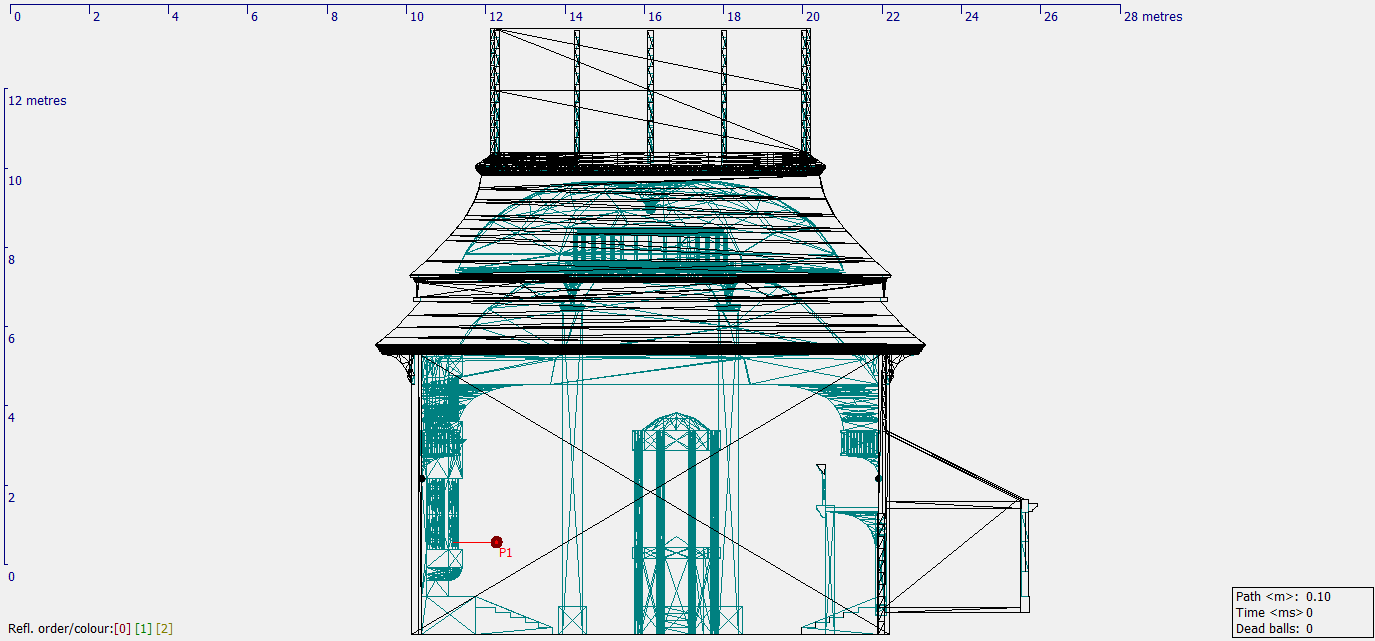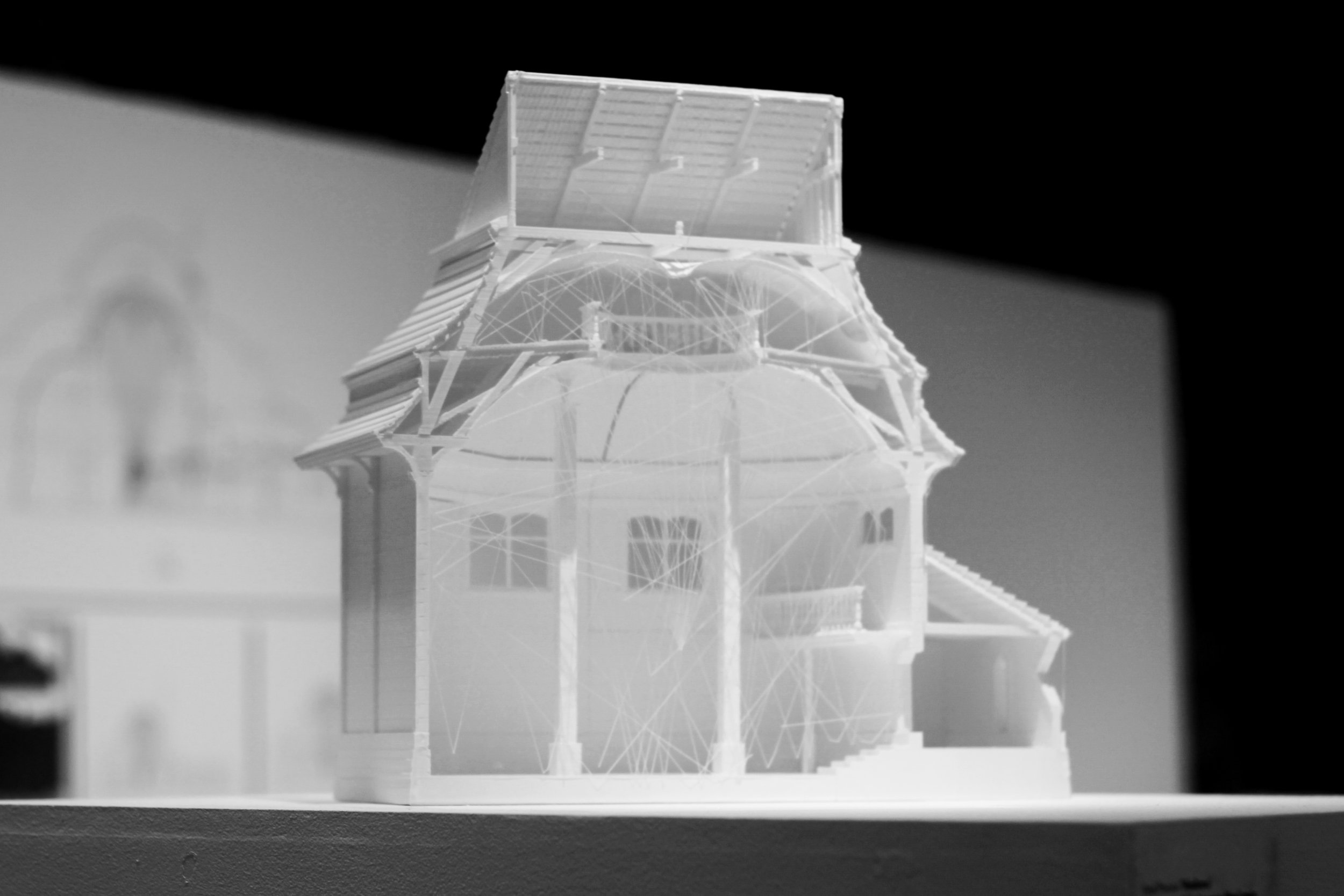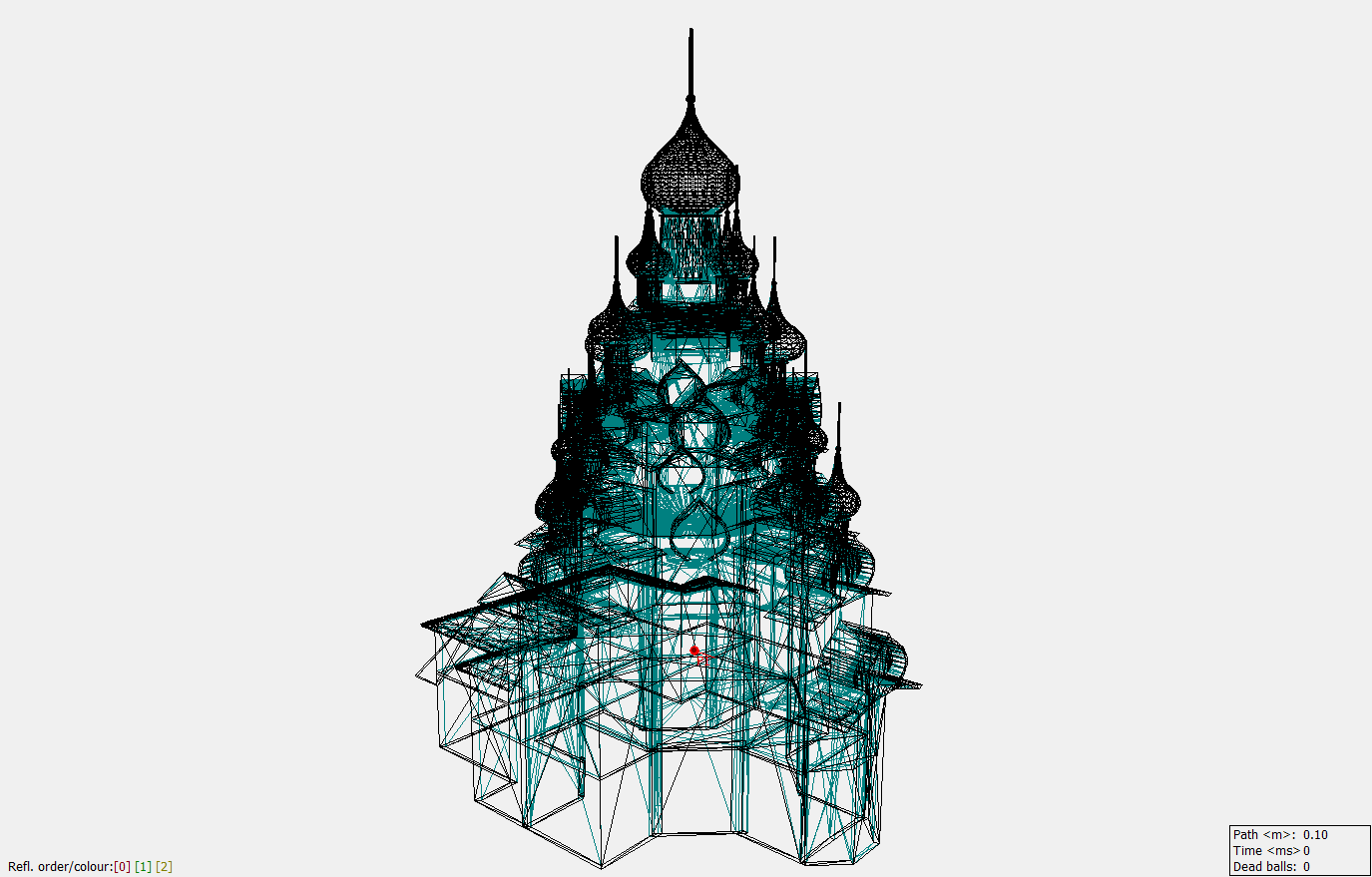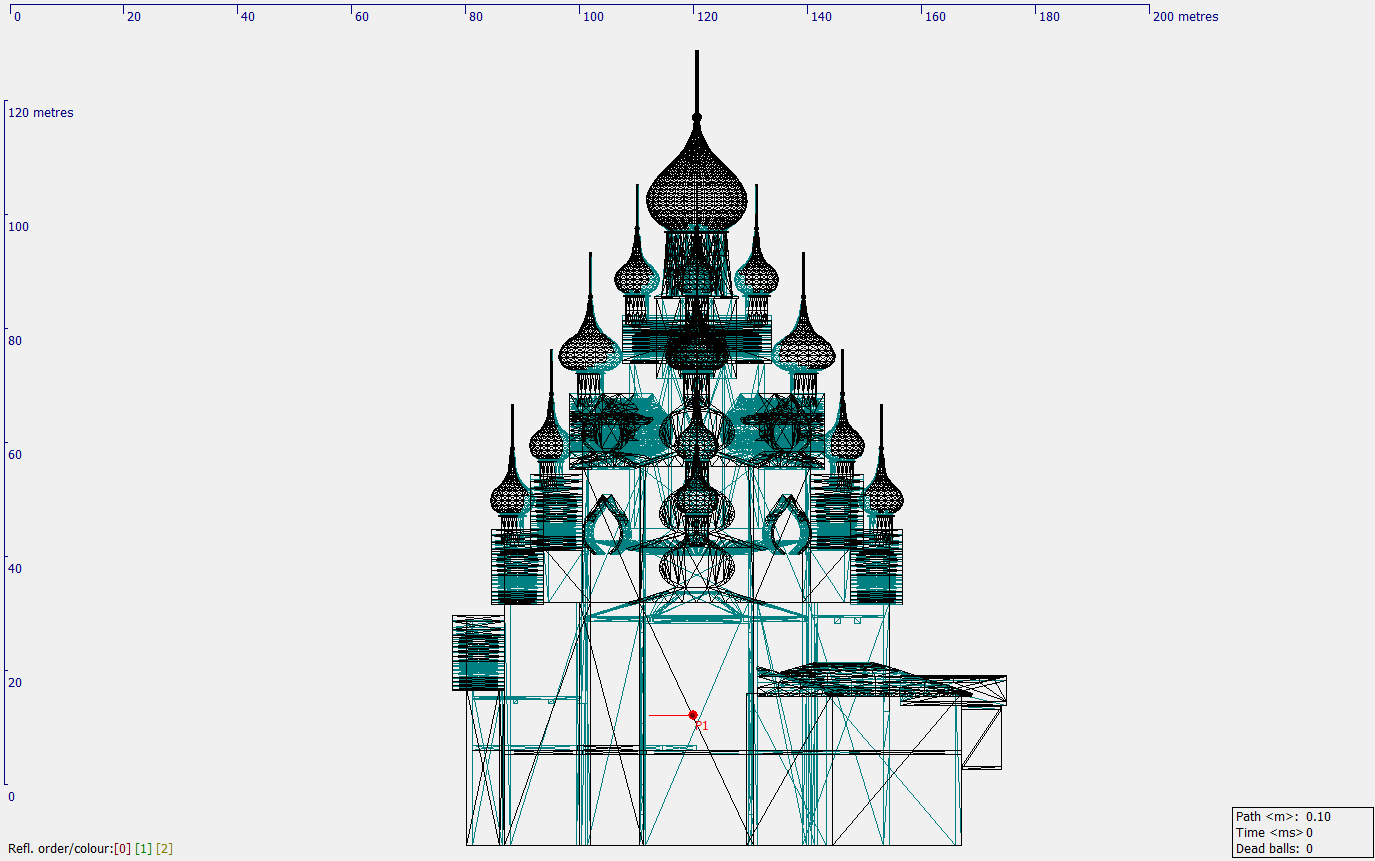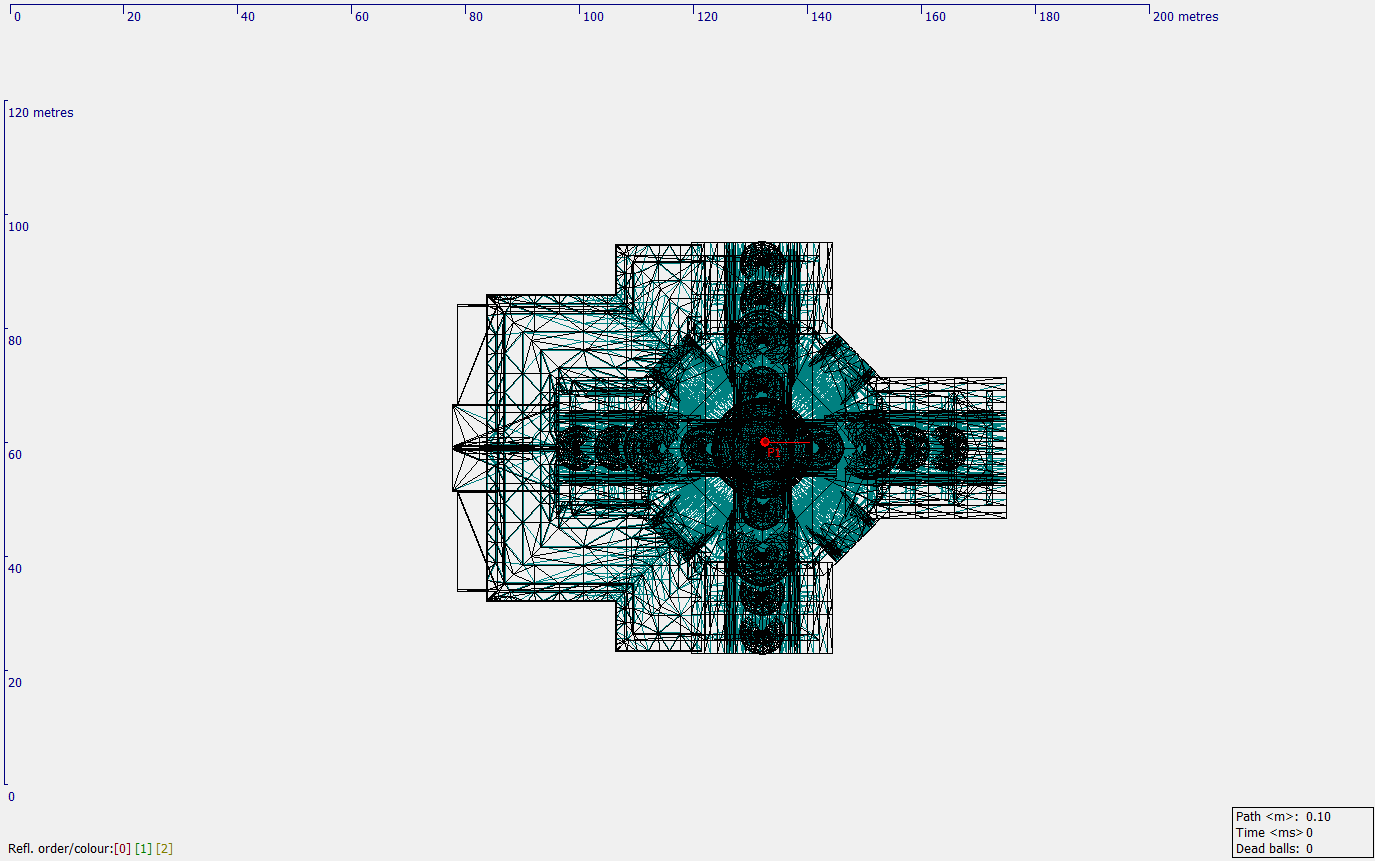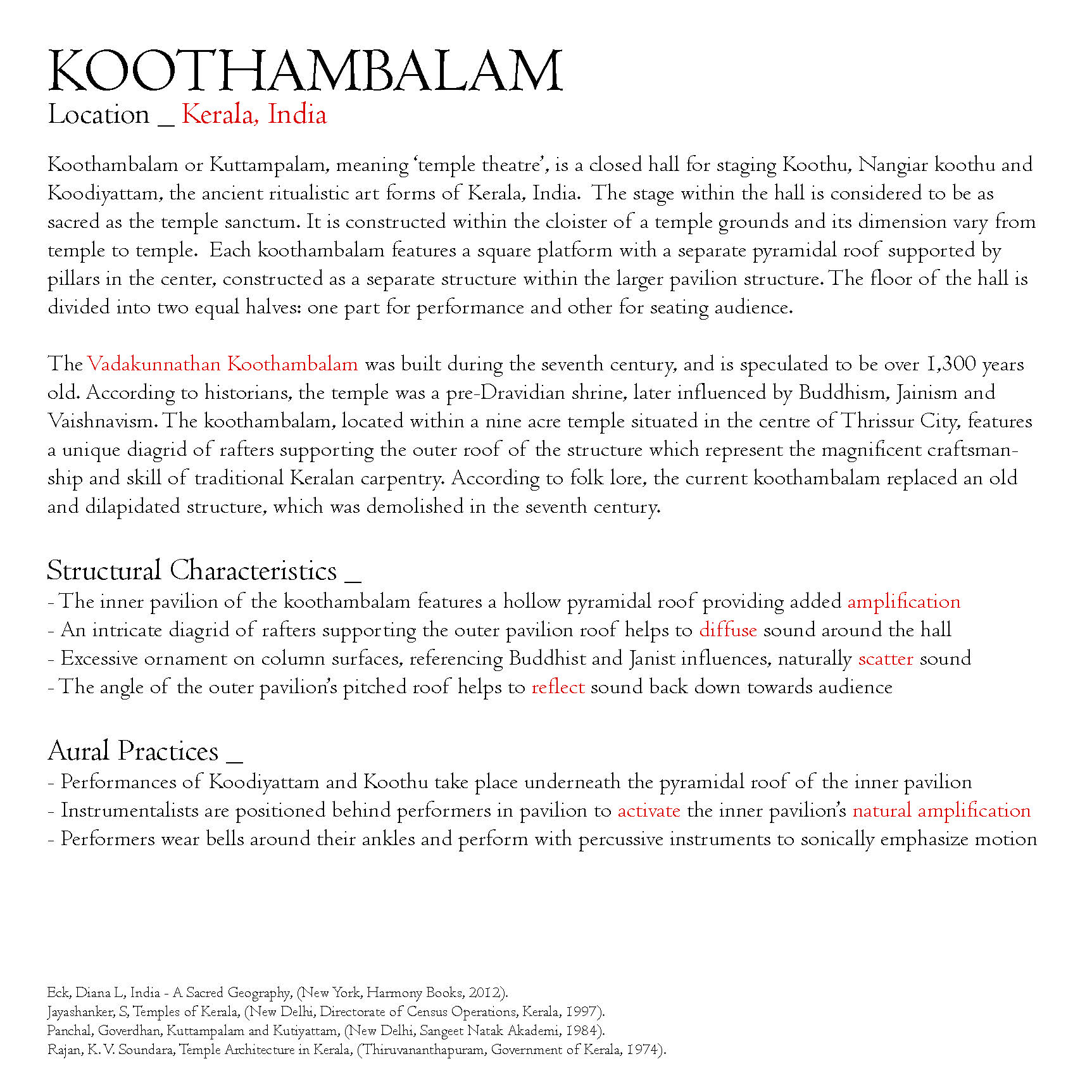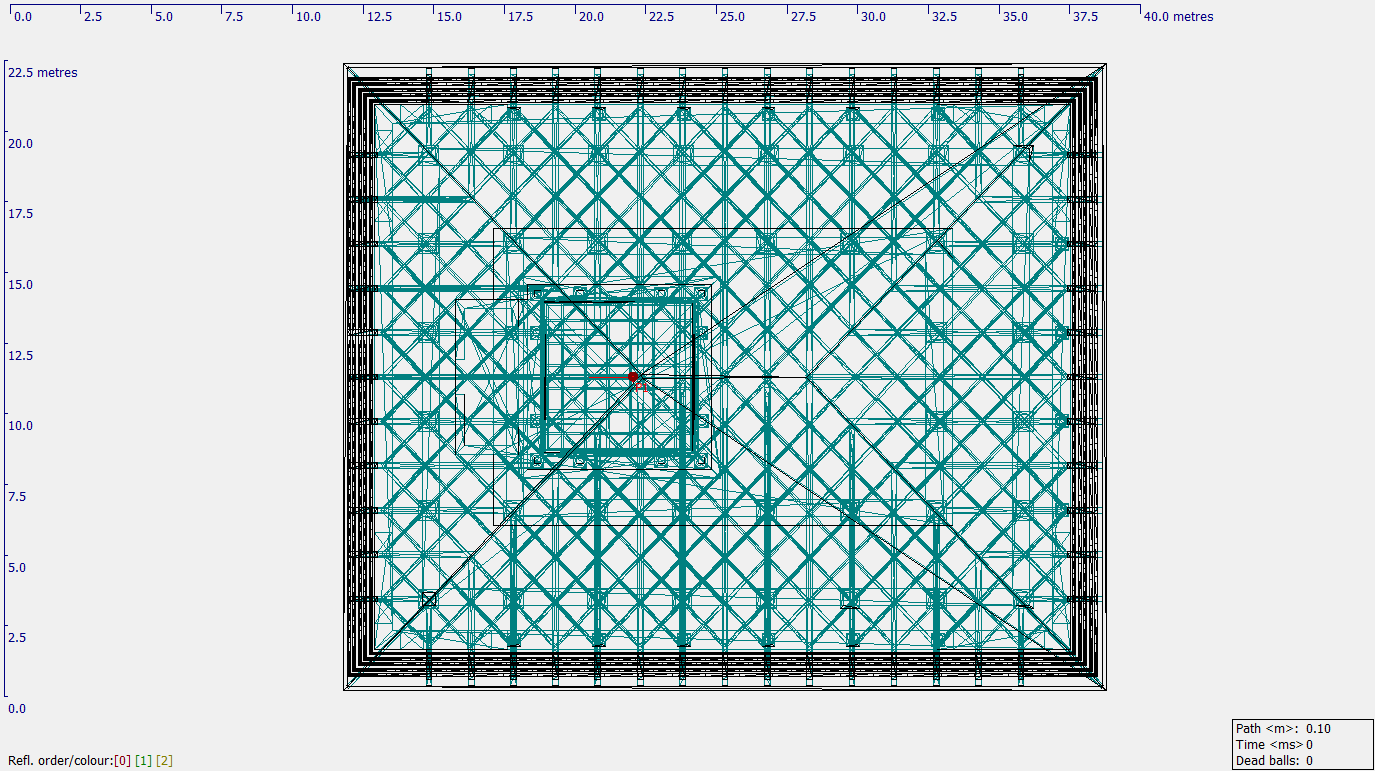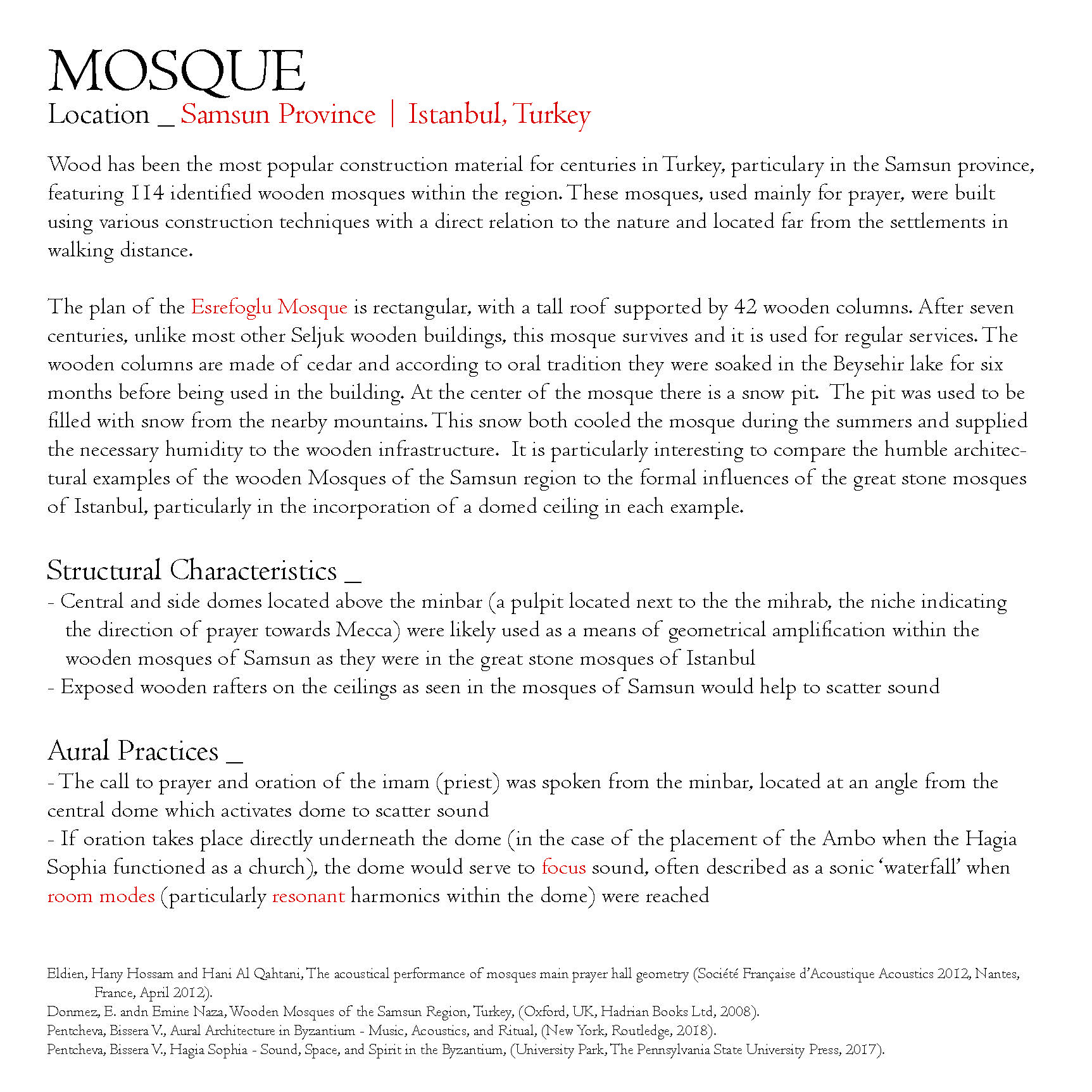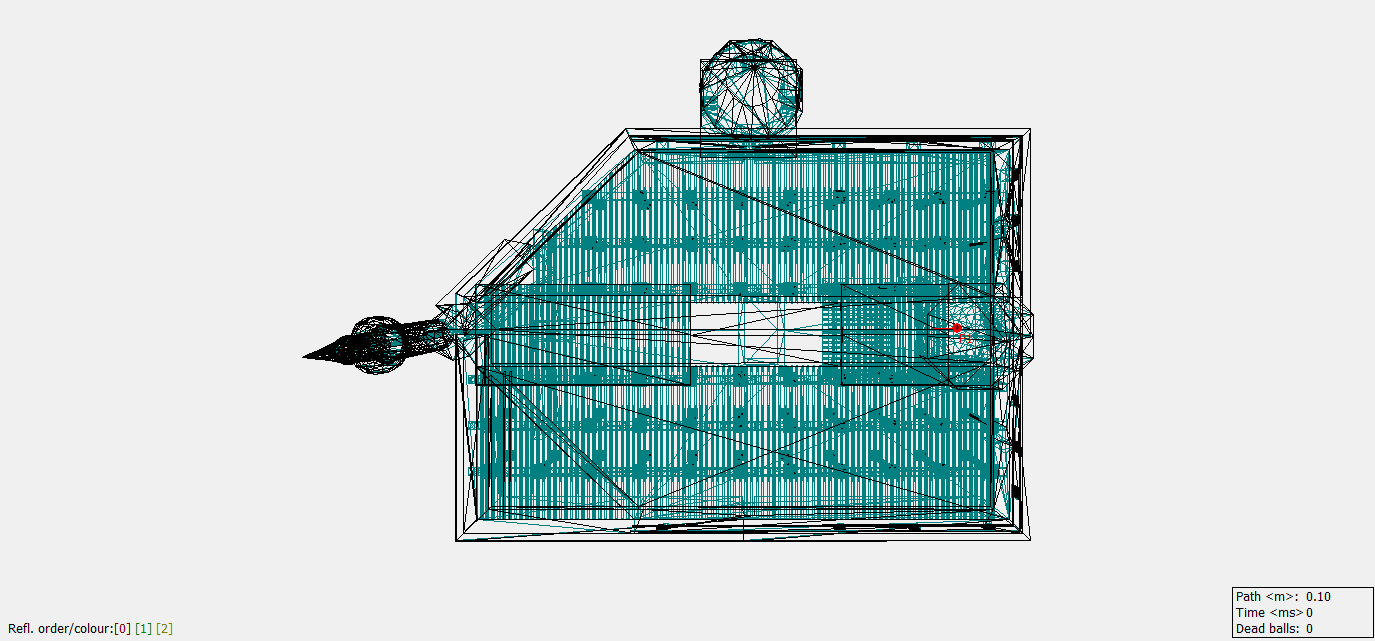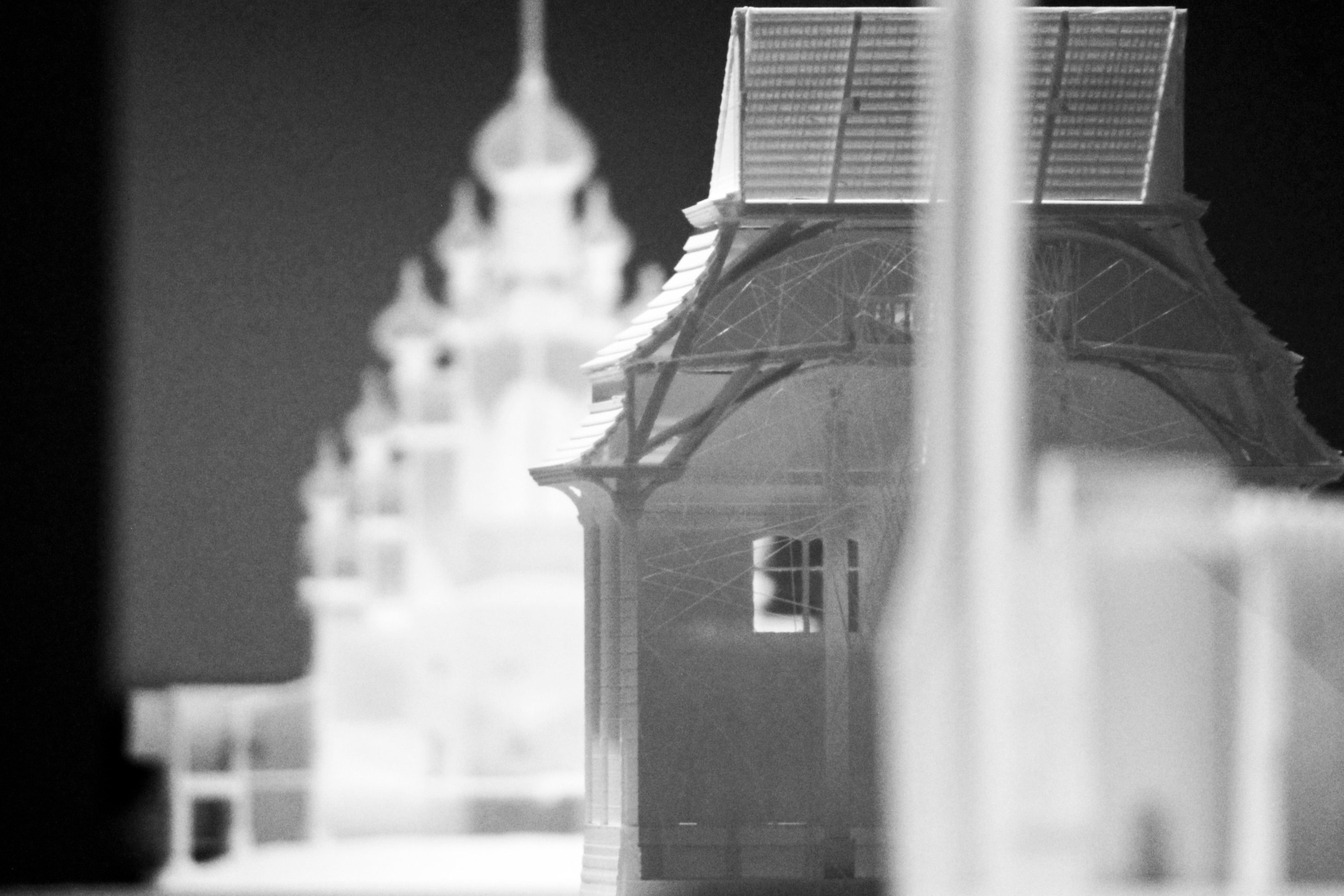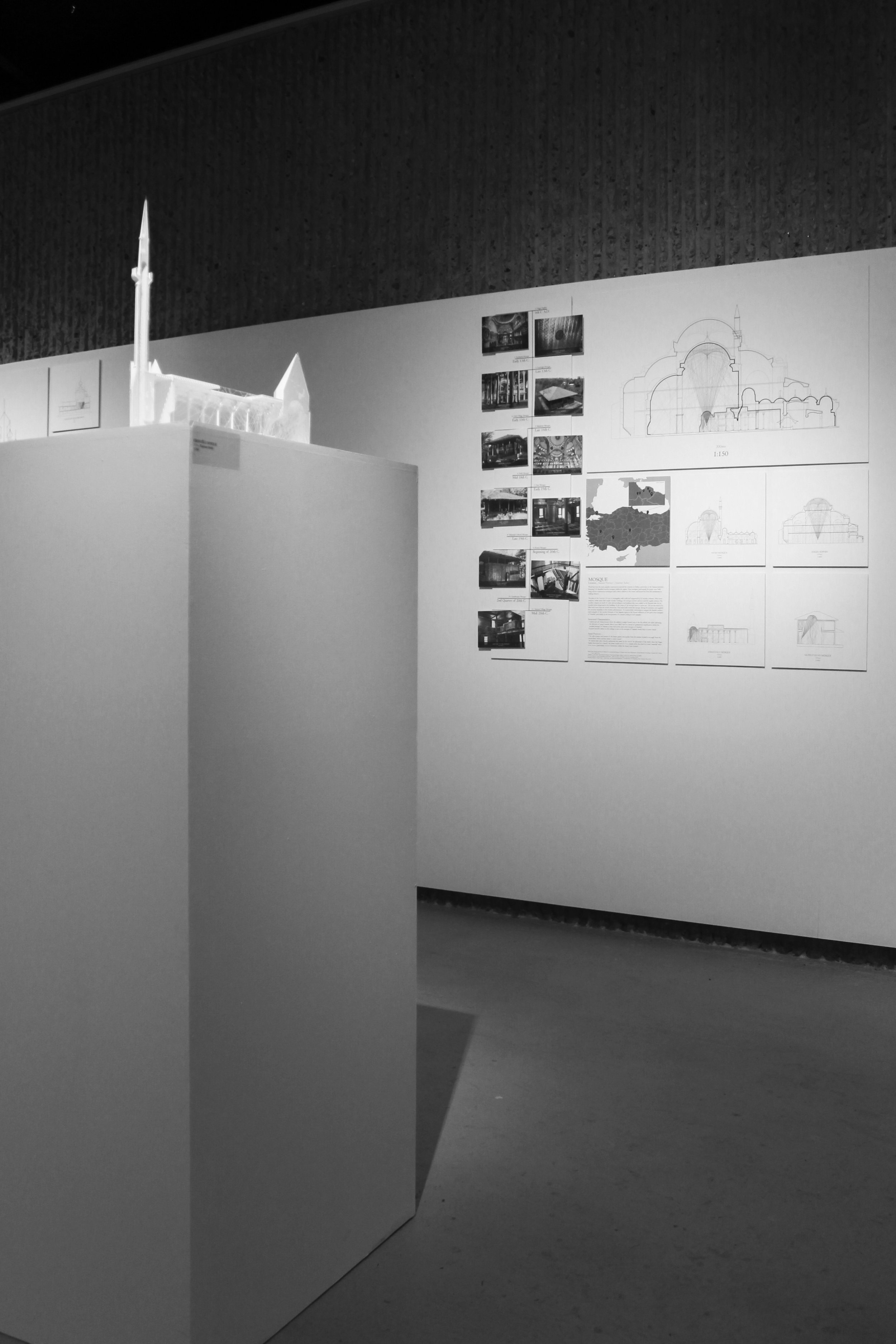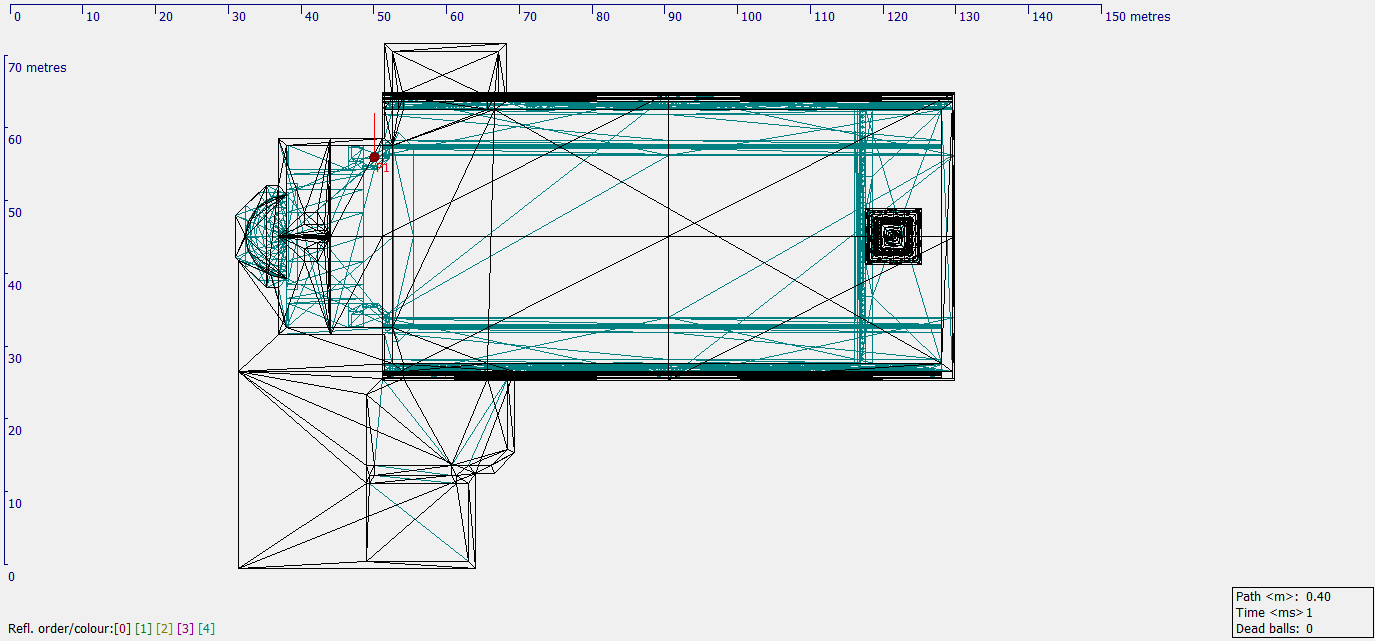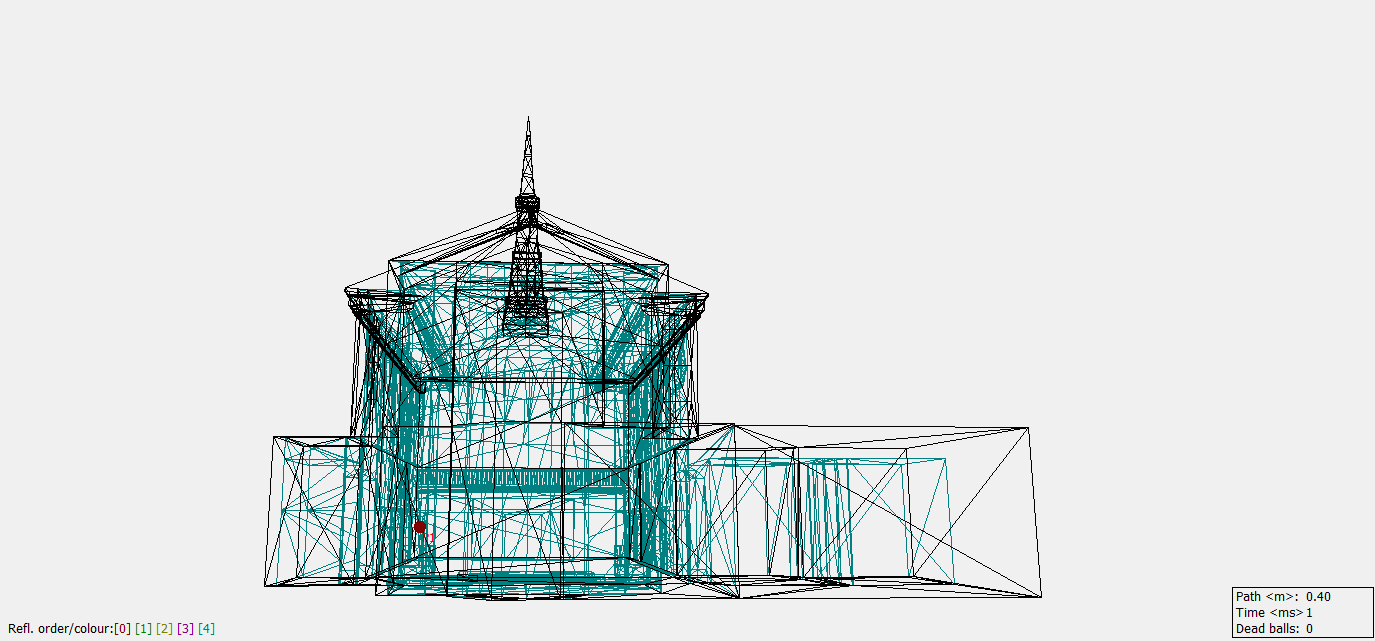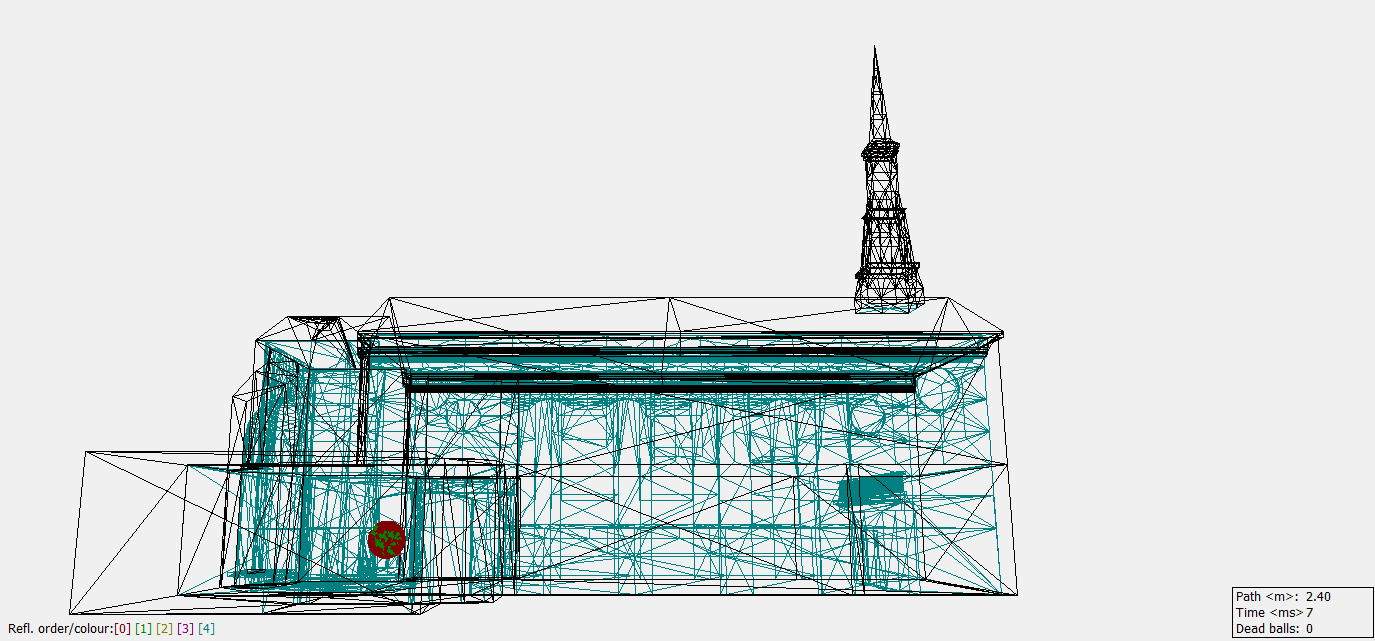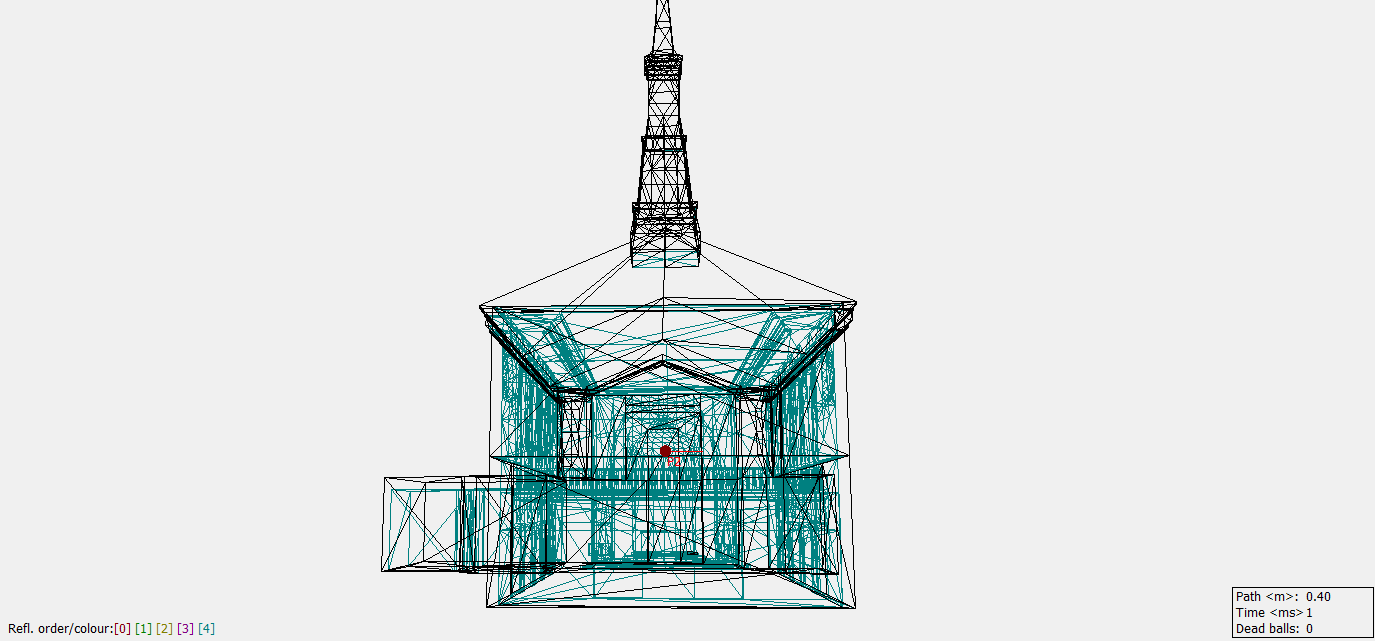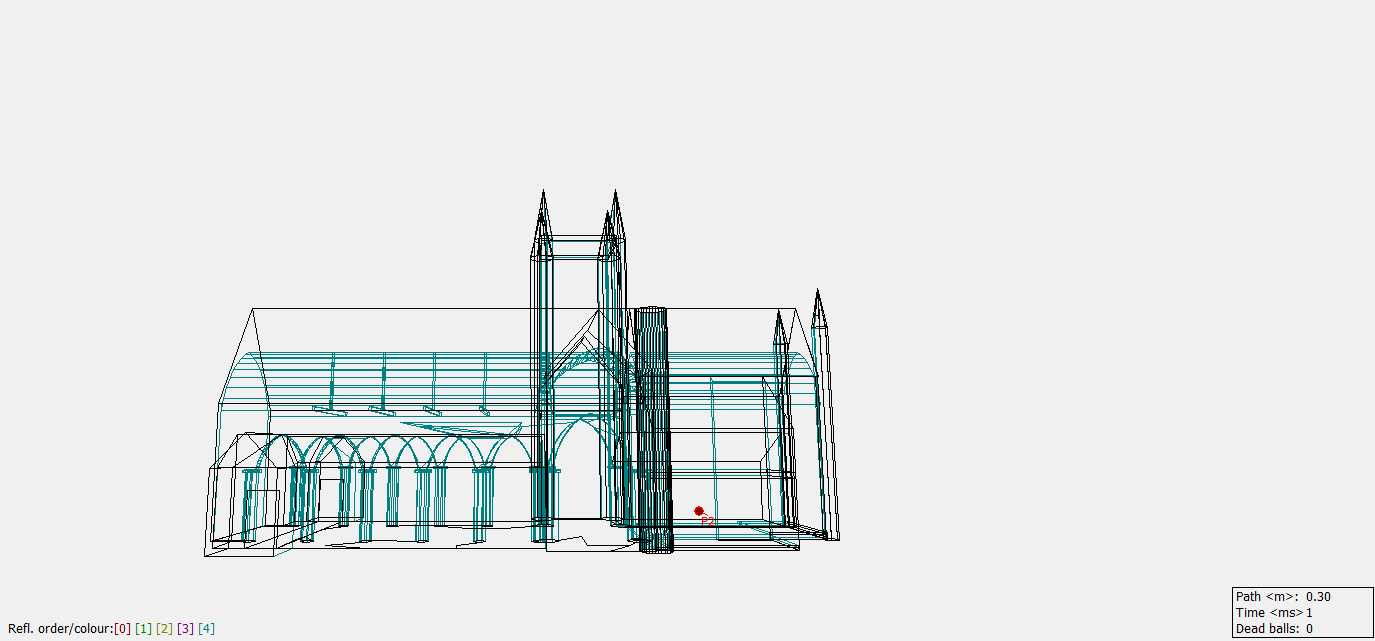A survey of religious Architectures, Acoustics, and Aural practices
Yale school of architecture north gallery Exhibit (february 21 - March 30)
Sounding Sacred Performance Tour - March 30th (12-2pm)
1st Stop - Trinity on the Green
Trinity Church on the Green has been an important part of the history of New Haven, Connecticut, and America for over 300 years. There has been an official Episcopal presence in New Haven ever since Anglican missionary priests first ministered to the region beginning in 1705. In 1723 a parish in New Haven was organized by Rev. Dr. Samuel Johnson. Under Dr. Johnson’s guidance, the Colonial wooden First Church was built in 1752-3, just before the beginning of the French and Indian War in the American Colonies. The Gothic “Trap Rock” Second Church was built in the midst of the War of 1812 in 1814-1816. Since then there have been many enhancements to the historic church, which stands at the corner of the towns famous Green in the center of the town, a cornerstone of New Haven’s vibrant religious, artistic, and community life.
Trinity and New Haven have historical associations with not only the Church of England, but clergy from the Scottish Episcopal Church and the Church of Ireland, Puritan refugees from Holland, and with French Huguenots. With the installation of Dr. Luk De Volder in 2011, Trinity Church and the New Haven community have reconnected with the history and languages of its ancestors.
The people of the parish of Trinity Church on the Green, New Haven, have built two churches in their long history since organized Episcopal services began in the town in 1723. The first church was built between July of 1752 and the summer of 1753. The second church was built between 1814 to 1816 by Ithiel Town, a pioneer in the Gothic Revival Style in America, For more on this influential and seminal early American architect, see the article Ithiel Town, Architect of Trinity Church.
After much research and long debate, it appears that the current Trinity Church on the Green, New Haven, by almost a decade, is indeed the first Gothic Style Church in America.1 — what the Trinity building committee in 1812 called the “Gothic Stile” and Bishop Jarvis in 1814 called the “Gothick” style—an architectural movement that spawned an American Gothic Style architectural movement called variously “Gothic Survival”, “Gothic Revival” or “neo-Gothic” style. It led to the building of at least 1,821 historic neo-Gothic churches in America in a similar style, Carpenter Gothic houses and small churches, Collegiate Gothic campus buildings, interior decorations, ironwork, and bridges culminating in the Brooklyn Bridge in 1883. It was built prior to the earliest Gothic Revival Style churches in Canada as well (New Haven had a thriving trade with Canada from its early days on though the 1800s), making it the first Gothic-Revival building in North America.
It is built out of local seam-faced “trap rock” or diabase, a dark volcanic rock whose iron weathers to a rusty brown when exposed to the air, giving the church a distinct reddish appearance. Built of the same stone as East Rock Park, its tower echoes the tall exposed rock ridges that border New Haven. For more on this unique stone, see the article Rock of Ages: Trinity’s Trap Rock Exterior.
CHOIR HISTORY
From the founding of Trinity in 1723, and the completion of the first wooden church in 1753, music has been an important part of its services of worship. By 1776, Trinity was taking the lead in establishing singing as a regular part of all Episcopal services throughout Connecticut. There are records of an organ subscription being taken at the end of the Revolutionary War. Trinity’s famous engraver and parishioner Amos Doolittle was one of the first American to engrave books with scores of music.
The Trinity Choir of Men and Boys is the oldest choir in New Haven, having been founded in 1885. It is the seventh oldest such choir in America. The Men and Boys who comprise its membership come from not only the parish but also the entire central Connecticut area. The Men and Boys usually sing at the 11:00 am service and other special parish services, including occasional Evensongs.
In 1975 the 9:00 service began to incorporate more contemporary music and instruments, including drums, guitars, and rock style music. The Spirit Singers choir evolved out of the “rock band” choir of the late 1970s, expanding by the early 1980s into gospel, contemporary Christian, and popular music, with the congregation often using the Lift Every Voice and Sing hymnal accompanied by piano. They sang the hymns, solos, service music and anthems, for the 9:00 am service, and every other Sunday in the summer and at special services including the 5:00 Christmas service. In 2012 they were disbanded, ending 37 years of experiment with contemporary music at Trinity.
The Adult Choir was initially created in the 1980s as a place for 11:00 adult parishioners not in the boys choir to sing. In 2012, they were renamed the Parish Choir, merging with members of the disbanded Spirit Singers.
It is fitting that, in a church with such a long tradition of choral leadership by children, the Choir of Men and Girls now takes a prominent place in the worship services of Trinity Church. The choir was founded in the Fall of 2003 comprising members auditioned from all over south-central Connecticut. Girls from grades 5 through 10 form the soprano section of the choir, accompanied by adult alto women, adult tenors and adult basses.
THE ÆOLIAN SKINNER ORGAN
The Æolian-Skinner organ was built in 1935. It was designed by G. Donald Harrison, Tonal Director of Æolian Skinner, and G. Huntington Byles, Organist/Choirmaster of Trinity Church.
Musical Selection
Psalm 46 by Martin Luther
God is our hope and strength
A very present help in trouble.
Therefore we will not fear though the earth be moved
and though the hills be carried into the midst of the sea.
Though the waters thereof rage and swell
and though the mountains shake at the tempest of the same.
The rivers of the flood thereof shall make glad the city of God
the holy place of the tabernacle of the most Highest.
God is the midst of her, therefore shall she not be removed
God shall help her, and that right early.
The heathen make much ado, and the kingdoms are moved
but God hath shewed his voice, and the earth shall melt away.
The Lord of Hosts is with us
the God of Jacob is our refuge.
O come hither, and behold the works of the Lord
What destruction he hath brought upon the earth.
He maketh wars to cease in all the world
He breaketh the bow, and knappeth the spear in sunder, and burneth the chariot in the fire.
Be still then, and know that I am God
I will be exalted among the heathen, and I will be exalted in the earth.
The Lord of hosts is with us
the God of Jacob is our refuge.
Glory be to the Father, and to the Son and to the Holy ghost
As it was in the beginning, is now and ever shall be,
world without end
Amen.
Duration: 800ms
Source: Choir Stalls
Duration: 600ms
Source: Choir Stalls
Duration: 600ms
Source: Choir Stalls
Duration: 1000ms
Source: Steps to Choir Stalls
Duration: 600ms
Source: Steps to Choir Stalls
Duration: 600ms
Source: Steps to Choir Stalls
2nd Stop - St. Thomas More
Catholic presence at Yale University has had a rich tradition of ministry since 1922, when Rev. Thomas Lawrason Riggs, a thirty-four year old newly ordained priest, was granted permission to take up residence at Yale University at his own expense. When he began his ministry in 1922, the Catholic presence at Yale was minimal. The number of Catholics in the student body, despite a dramatic jump in the years after World War I, totaled about 300 of a total enrollment of 3,930.
His intelligence and personal charm won him a dedicated band of student disciples. From each class he attracted a handful of admirers who served his Masses, dined at his home, and worked diligently for the Catholic Club. After graduation these devoted followers assumed their places in a Catholic intellectual elite. Many of them spearheaded the drive that raised over $200,000 to build Saint Thomas More House and Chapel.
ARCHITECTURE
“A turning point in architectural history takes place here between the rich fabric of James Gamble Rogers and the design of St. Thomas More by Douglas Orr, which despite its date belongs to the pre-depression world, and the spare outline of the chapel. In its time, St. Thomas More was a startling building, and it became a rallying point for a Depression generation who were rejecting Rogers’ eclecticism as “dishonest” and looking for something which they could identify as ‘modern’. Today we see the chapel less as a manifesto and more as a transition.” - Elizabeth Mills Brown, New Haven - A Guide to Architecture and Urban Design, 1976
Saint Thomas More Chapel (renovated in 2008) and Thomas E. Golden, Jr. Center (built in 2006) are award-winning, magnificent spaces that exemplify the ministry’s commitment to excellence. More than just a beautiful building, The Thomas E. Golden, Jr. Center is a statement that Catholic life has come of age on Yale’s campus. The center, designed by world renowned architect and former Dean of Yale School of Architecture, Cesar Pelli of Pelli Clarke Pelli, is located across from the Pierson gateway.
2008 SANCTUARY RENOVATION - KNIGHT ARCHITECTURE
An excerpt from “Yale's Historic St. Thomas More Chapel Renovated” - Mary E. O’Leary, New Haven Register, Nov. 14, 2008
In 1938, the Rev. T. Lawrason Riggs got his wish for a Catholic chapel at Yale University, a small worship space on Park Street that easily blended with the nearby Georgian residential colleges. "There decidedly was a desire to make this, the first home of Catholics at Yale, feel like a piece of Yale," said architect George Knight.
That space, the Saint Thomas More Chapel, designed by Douglass Orr, a one-time president of the American Institute of Architects, has been updated with many of Orr's original features brought back to life. Almost 70 years to the day after the chapel was opened, it was rededicated this fall as part of a $5 million renovation that included work on an adjoining residence for the chaplain, a meeting hall and church offices. It completes phase two of a $25 million building project that saw the opening of the adjoining Thomas E. Golden Jr. Center in December 2006, a 30,000-square-foot limestone building designed by Cesar Pelli that contains a library, dining hall, glass-enclosed courtyard, meditation center and seminar rooms for student use. Knight said Orr's career spanned the departure from beaux-art classicism to high orthodox modernism and the chapel is an example of a transitional neo-classical style.
It is part of Orr's legacy in the late 1930s that saw construction of many homes in the area, as well as the New Haven Lawn Club on Humphrey Street and the award-winning art deco Southern New England Telephone headquarters on Church Street. Knight, who also worked on the Golden Center as a member of Pelli Clarke Pelli but has since opened his own firm, said as a parishioner of Saint Thomas More he felt a special connection to the chapel project. He said he set out "to re-find the spirit, the character and morphology of the original building," while adding some new elements and correcting some of the changes brought in during the 1970s that were stylistically inconsistent. "One of the things that was inspiring to me was to come to a place that had a great deal of character and to pause and look at the transformations that had occurred over time that seemed to disregard the original character of the building," Knight said. The first things you now notice when you walk into the renovated space are the chandeliers, art deco-style copper and nickel fixtures, which were part of the original chapel. Knight said they found four of them intact, repaired two more and commissioned Crenshaw Lighting of Virginia to fashion two more.
"In the evening, there is a beautiful amber glow" from the lights, Knight said.
MUSIC
The Chapel is known for its outstanding liturgical music as well as the annual Triduum liturgy featuring all of the Chapel’s ensembles in a dramatic celebration lasting three days. Music includes a sung Passion and Easter Vigil. Richard Gard, Director of Music at St. Thomas More, is assisted by composer in residence Julian Revie, accompanists Laura Richling and Katie Martin, and assistant conductors Natalie Plaza, Daniel Reed and Evelyn Gard. The Chapel also offers free voice lessons as part of a cantor-intern program open to Yale students.
Musical Selection
Psalm 138, music by Julian Revie
1 I will praise you, Lord, with all my heart;
before the “gods” I will sing your praise.
2 I will bow down toward your holy temple
and will praise your name
for your unfailing love and your faithfulness,
for you have so exalted your solemn decree
that it surpasses your fame.
3 When I called, you answered me;
you greatly emboldened me.
4 May all the kings of the earth praise you, Lord,
when they hear what you have decreed.
5 May they sing of the ways of the Lord,
for the glory of the Lord is great.
6 Though the Lord is exalted, he looks kindly on the lowly;
though lofty, he sees them from afar.
7 Though I walk in the midst of trouble,
you preserve my life.
You stretch out your hand against the anger of my foes;
with your right hand you save me.
8 The Lord will vindicate me;
your love, Lord, endures forever—
do not abandon the works of your hands.
Duration: 500ms
Source: Ambo
Duration: 500ms
Source: Ambo
Duration: 500ms
Source: Ambo
The Lord’s Prayer, music by Margaret Burk
Our Father who art in heaven,
hallowed be thy name.
Thy kingdom come.
Thy will be done on earth as it is in heaven.
Give us this day our daily bread,
and forgive us our trespasses, as we forgive those who trespass against us,
and lead us not into temptation, but deliver us from evil.
Duration: 500ms
Source: Choir Stalls
Duration: 500ms
Source: Choir Stalls
Duration: 500ms
Source: Choir Stalls
3rd Stop - Christ Church
Christ Church Parish was founded in 1854 as a mission of the city’s first Episcopal parish, Trinity Church. The parish was created through the generosity of the three Edwards sisters, parishioners of Trinity who were strong adherents of the Oxford Movement. The early mission enabled New Haven Episcopalians to receive Holy Communion more than once a month (uncommon in the Episcopal Church at the time) and to attend Morning and Evening Prayer during the week, and by 1856 attendance at Christ Church grew to ninety-three families, with over one hundred and fifty Sunday School children.
Christ Church has long been a center of Anglo-Catholic worship. Anglo-Catholicism seeks to promote authentic praise of God by sharing in the traditions of worship practiced by Christians since the Early Church. Solemn High Mass on Sundays aims to bear witness to the divine mystery through the music of a professional choir and liturgy which centers around the full ministry of Word and Sacrament.
Christ Church is among the masterworks of the architect Henry Vaughan (1845-1917), whose work for schools and churches helped inspire the Gothic Revival in the United States and shape the nation's idea of how a church building ought to look.
The style of Christ Church, however, is not generic Gothic (characterized by the use of pointed arches), but derived from a specifically English version that flourished in the fourteenth and fifteenth centuries. In his scholarly, almost archaeological approach, Vaughan sought particular late medieval examples to serve as inspiration for his designs. Thus, the bell tower of Christ Church is modeled after the tower at Magdalen College, Oxford. Such attention to historical sources was in keeping with liturgical reforms initiated in England by the Oxford Movement in the second quarter of the nineteenth century, which sought to restore awareness of the Catholic heritage of the Anglican church and to revive worship practices of the late Middle Ages. These practices in turn required a medieval architectural setting—thus the need for a delicately carved screen in front of the chancel and for monumental stone figures about the high altar.
Vaughan was intimately involved in the design of all aspects of the decoration of the church and in choosing the artists. The firm of C. E. Kempe in London, for example, provided the brilliant stained glass windows, while the intricate wood carving was done by a favorite sculptor of Vaughan’s, Johannes Kirchmayer, a native of Bavaria. Christ Church, which has been called “the jewel of Vaughan’s parish architecture,” is therefore remarkable for the unity in style and program — a program of spiritual resonances as well as of visual beauty.
THE CHRIST CHURCH CHOIR
The Christ Church Choir sings at the Solemn High Mass on Sunday mornings during Yale term and at other occasional services throughout the year. The fully-professional chamber ensemble is made up of faculty and students from Yale University and members of the New Haven community. The choir sings polyphonic settings of the Mass ordinary; Gregorian minor propers; Psalms to plainsong and Anglican chant; and anthems and motets drawn from all periods of music history, placing a special emphasis on early music and music of the Anglican cathedral tradition.
COMPLINE CHOIR
The late evening service of Compline is sung in the candlelit nave of Christ Church at 9pm every Sunday during the Yale term by soloists drawn from the choir. The music for Compline is based in Roman chant and consists mostly of plainsong, with the incorporation of polyphonic anthems and hymns.
CHRIST CHURCH CHOIR ORATORIO SOCIETY
The oratorio choir was formed for special performances of large-scale Baroque and Classical works like Handel’s Messiah and Coronation Anthems, Bach’s Christmas Oratorio and Passion settings, and Buxtehude’s Membra Jesu Nostri. The group consists of current Christ Church Choir singers, Christ Church Choir alumni, and singers from the Yale Institute of Sacred Music, and performs with various local chamber ensembles.
Musical Selection
Factum est Silentium, music by Richard Dering
Factum est silentium in caelo,
Dum committeret bellum draco cum Michaele Archangelo.
Audita est vox millia millium dicentium:
Salus, honor et virtus omnipotenti Deo.
Millia millium minestrabant ei et decies centena millia assistebant ei.
[Alleluia.]
There was silence in heaven
When the dragon fought with the Archangel Michael.
The voice of a thousand thousand was heard saying:
Salvation, honour and power be to almighty God.
A thousand thousand ministered to him and ten hundreds of thousands stood before him.
[Alleluia.]
Duration: 1000ms
Source: Chancel
Duration: 500ms
Source: Chancel
Duration: 500ms
Source: Chancel
Ave Maria
Ave Maria, gratia plena,
Dominus tecum,
benedicta tu in mulieribus,
et benedictus fructus ventris tui, Iesus.
Sancta Maria, Mater Dei,
ora pro nobis peccatoribus,
nunc et in hora mortis nostrae.
Amen.
Hail Mary, full of grace,
the Lord is with thee,
blessed art thou amongst women,
and blessed is the fruit of thy womb, Jesus.
Holy Mary, Mother of God,
pray for us sinners,
now and at the hour of our death.
Amen.
Duration: 800ms
Source: Lady Chapel
Duration: 500ms
Source: Lady Chapel
Duration: 500ms
Source: Lady Chapel










